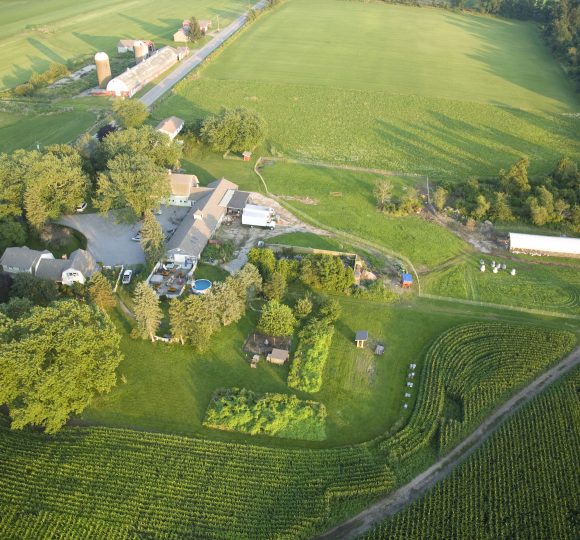Agriculture faces a multitude of challenges in the 21st century, and new tools are needed to help determine how it should respond. Among these challenges is a need to reconcile how human food consumption patterns should change to both improve human nutrition and reduce agriculture’s environmental footprint. A complete-diet framework is needed for better understanding how diet influences demand for a fundamental agricultural resource, land. We tested such a model, measuring the impact of fat and meat consumption on the land requirements of food production in New York State (NYS). Analysis was confined to this geographic area to simplify the modeling procedure and to examine the state’s ability to reduce environmental impact by supplying food locally. Per capita land resource requirements were calculated with a spreadsheet model for 42 diets ranging from 0 to 381 g d – 1 (0 to 12 oz d – 1) of meat and eggs and 20 to 45% total calories from fat. Many of these diets meet national dietary recommendations. The potential human carrying capacity of the NYS land base was then derived, based on recent estimates of available agricultural land. A nearly fivefold difference (0.18–0.86 ha) in per capita land requirements was observed across the diets. Increasing meat in the diet increased per capita land requirements, while increasing total dietary fat increased the land requirements of low meat diets but reduced the land needed for high meat diets. Higher meat diets used a larger share of the available cropland suited only to pasture and perennial crops. Thus, only a threefold difference was observed for the potential number of people fed from the NYS land base (2.0–6.2 million). In addition, some high-fat vegetarian diets supported fewer people than lower fat diets containing 63–127 g d – 1 of meat (approximately one- to two-thirds of the national average per capita consumption in the US). These results support the assertion that diet should be considered in its entirety when assessing environmental impact. To more completely understand how diet influences land requirements and potential carrying capacity, this model should be applied across a larger geographic area that encompasses a wider variety of climates and soil resources. To better understand the ability of a local region to supply more of its own food, the model should be moved into a geospatial framework.
Publications
Testing A Complete-Diet Model for Estimating the Land Resource Requirements of Food Consumption and Agricultural Carrying Capacity: The New York State Example
Publication Name
Renewable Agriculture and Food Systems
Downloadable Documents
Author
Christian J. Peters, Jennifer L. Wilkins and Gary W. Fick
Publisher
Cambridge, England: Cambridge University Press
Page Numbers
9
Publication Date
May 01, 2007
Publication Type
Articles
State
New York
Keywords
Foodshed and Food Gap Assessments, Local / Regional Food Systems





